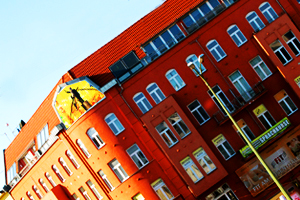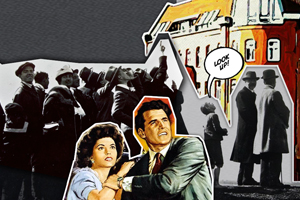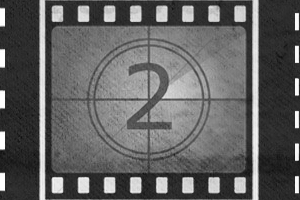MOMENTUM_InsideOut Screening
For Cinema Total, part of the Berlinale International Film Festival
10 – 16 February 2014
20:00 – 24:00
FEATURING:
Theo Eshetu // Bjørn Melhus // Reynold Reynolds // Sarah Choo Jing // Bence Fliegauf
Curated by:
David Szauder, Fanni Magyar, Francoise von Roy, Rachel Rits-Volloch
Venue:
Media Facade, Collegium Hungaricum, Dorotheenstrasse 12, 10117 Berlin-Mitte
A selection of video works illustrating Cinema Total’s special focus on the intersection of film and video art, screened after dark on .CHB’s panorama window – the Medienfassade.
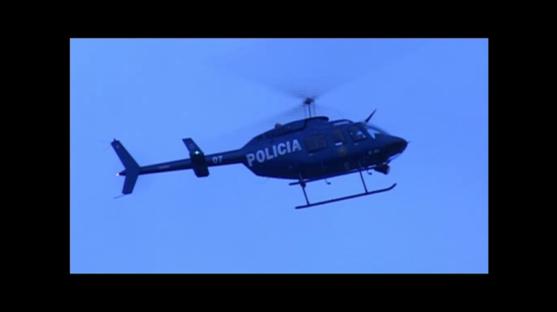
Bjorn Melhus, Policia, 2007
Bjorn Melhus (born 1966, Kirchheim unter Teck) is a German-Norwegian media artist. In his work he has developed a singular position, expanding the possibilities for a critical reception of cinema and television. His practice of fragmentation, destruction, and reconstitution of well-known figures, topics, and strategies of the mass media opens up not only a network of new interpretations and critical commentaries, but also defines the relationship of mass media and viewer anew.
Through a synchronised sound and light projection that evokes a helicopter gunship in battle, Murphy creates a disturbingly imaginative portrayal of Post Traumatic Stress Disorder. Operating a dramatic reduction to abstract fields of colour, the visual onslaught is concentrated on, as well as intensifying, the violent soundscape of guns and rotating helicopter blades. The videolight sequence is based on sound snippets from the movie Blue Thunder (USA, 1982), which was one of the early 80’s media rehabilitation of Vietnam war veterans in civilian society. By re-integrating war veterans into a civilian society, the war itself was subconsciously brought to America and turned the air space above the urban landscape of Los Angeles into a battlefield. In Murphy the visible stream of colored light and the absence of the image itself creates an imaginary movie that possibly connects to the first draft of the screenplay for Blue Thunder which featured Frank Murphy as more of a crazy main character with deeper psychological issues, who went on a rampage and destroyed a lot more of the city. Murphy is a true abstract Post Traumatic Stress Disorder.
Exhibiting a paradoxically static yet active Mexican police helicopter, appearing to be simultaneously vigilant and pointless, it is as if suspended on it’s way to an emergency operation. Acting as a biting commentary on the hollowness of the Mexican state, where country’s security apparatus imposes surveillance systems that fails to offer security, Policia delineates the paradox of control in contemporary Mexican society. In a country that is being increasingly militarized and where drug barons and paramilitary organizations are eroding the political and legal structures of the state, the suspended helicopter points to the increasingly blurred boundaries between the various groups competing for power.
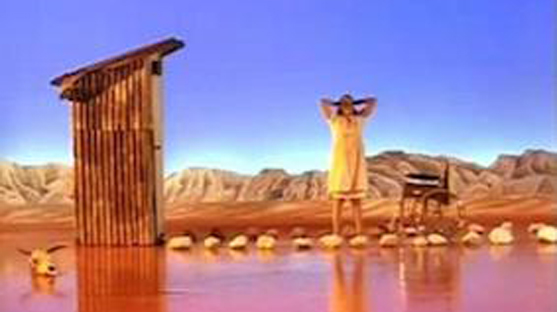
Tracey Moffatt, Night Cries, 1989
Tracey Moffatt (born 1960, Brisbane) is an Australian photographer and filmmaker. Moffat began her career as an experimental filmmaker and as a producer of music videos, and she continued making films after establishing herself as a photographer. She uses obscure references to issues of sexuality, history, representation and race. In the late 1990s she focused on the relationship between Australian Aborigines and white colonial settlers. The use of photogravure and deliberately flawed prints heightens the ambience, informed by late 19th century photography as well as by Expressionist cinematic techniques of shadow and distortion. The typically atmospheric, dreamlike quality of these works creates a space in which actors can embody wider sexual and social conflicts. Moffatt’s work since 2000 has retreated from specific locales and subject matter and become more explicitly concerned with fame and celebrity.
Her works often deal with indigenous issues and questions black and white relationships. Drawing on manifold aesthetic icons from both withe and black Australia in her photo series and films, Moffatt presents her agenda of life in contemporary Australia in highly stylized terms. Her short film Night Cries is engaged with the older movie’s problematic ideologies of race and power relations. The short telling a story of an adopted middle-aged Aboriginal women who is bound to care for her dying white mother, both of them being entrapped within their histories. They are shown to embody the tension between the white education and an Aboriginal parentage. The Technicolor aesthetics of Night Cries studio landscape and interior are set against the chilling soundscape of the titular cries, thus creating a cinematic style torn between melodrama and the Gothic.
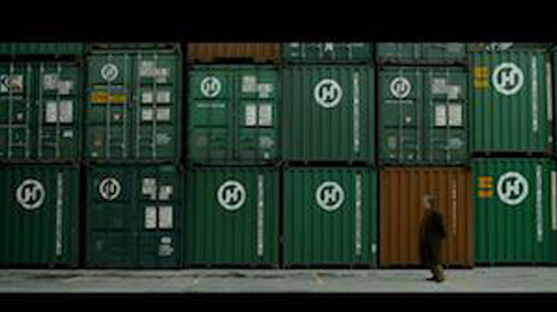
Bence Fliegauf, Milky Way, 2007
Bence Fliegauf (born 1974, Budapest) learnt all aspects of his industry. After training as a stage designer, he worked on film sets as well. He also worked as an arts journalist and made television documentaries for various Hungarian broadcasters. Even without the official sanction of the film academy, he soon convinced the trade of his talent and skills. Fliegauf has completed his films there ever since. He has so far made three highly distinctive full-length fiction films, one long documentary, and a handful of experimental shorts. A highly thoughtful and involved film maker, Fliegauf is heavily involved in the technicalities of film making alongside the metaphysics of moving image creation.
Milky Way is perhaps Fliegauf’s most experimental film yet, it is always accessible and mesmerizingly beautiful. It consists of ten lengthy landscape shots filmed with a static Scope camera, most of them featuring subtly modulated sound and human figures engaged in what initially appear to be strange, arcane rituals. There’s no overall plot though the painterly scenes proceed from night through various exquisitely captured daylight hues and back to night again – but each vignette suggests some sort of small, mysterious narrative, be it suspenseful, sad or drily funny.

Reynold Reynolds, Secret Life, 2008
Reynold Reynolds (born 1966, Central Alaska) influenced early on by philosophy and science, and working primarily with 16mm as an art medium. Reynold Reynolds has developed a film grammar based on transformation, consumption and decay. Detailed evolving symbols and allusive references create a powerful pictorial language based on Reynolds’ analytical point of view. By subtly altering the regular conditions of life and watching their effects, he transfers the experimental methods of science to filmmaking, where he frames reality in his laboratory and changes one variable at a time to reveal an underlying causality.
Secret Life (2008) explores the edges of our human perception, where time does pass but is almost impossible to observe. This is the first part of the Secrets Trilogy, portrays a woman trapped in an apartment with a life of its own. She moves at a mechanical speed and her mind is like a clock whose hands pin the events of her life to the tapestry of time; reflected in the mechanical eye of the camera. Her thoughts escape her and come to life, growing like the plants that inhabit the space around her: living, searching, feeling, breathing and dying.
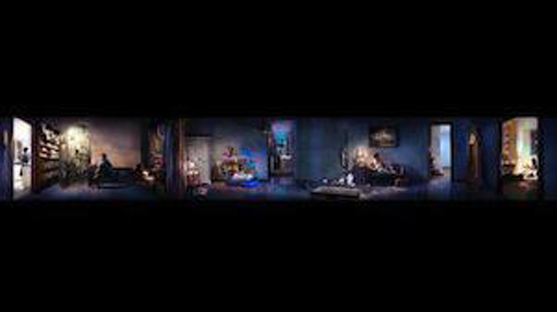
Choo Jing Sarah, The Hidden Dimension, 2013
Choo Jing Sarah (born 1990, Singapore) is a Multidisciplinary Fine Artist who has recently graduated from the Nanyang Technological University’s School of Art Design and Media. Focusing on the relationship between space and time, Choo’s work depicts identifiable moments and characters within contemporary Singaporean society. Intentionally constructed and staged, the artist reflects upon local social and cultural norms.
Solitude has become a significant issue in today’s society. In her recent work, Choo reflects upon this phenomenon. In The Hidden Dimension she questions the effectiveness of the relief offered by daily routines. Seven members of her family are depicted engaged in trivial acts of self-occupation. At exactly the same point in the film, in an unexpected cadence, they simultaneously break from their self-imposed Sisyphean distraction and look out into the audience and each other.

Theo Eshetu, Lightning Strikes, 2009
Theo Eshetu (born 1958, London) his childhood was spent between Ethiopia, Senegal and Yugoslavia, among other nations. Theo Eshetu has worked in media art since 1982, creating installations, video art works, and television documentaries. As a video maker, he explores the expressive capabilities of the medium and the manipulation of the language of television. Exploring themes and imagery from anthropology, art history, scientific research, and religious iconography, he attempts to define how electronic media shapes identity and perception. World cultures, particularly the relationship of African and European cultures, often inform Eshetu’s work.
Lightning Strikes (2009) is being shown to coincide with Theo Eshetu’s exhibition The Return of the Axum Obelisk at the DAAD Galerie, running from Feb 1 – March 15th 2014. The Obelisk of Axum was taken as a war trophy from Ethiopia to Rome by Mussolini’s army during the Italian occupation of 1935. Since the signing of a peace, treaty in 1942 it became the subject for debate as to whether it should be returned to Axum or not. Over the years support for its restitution grew, but neither political or historical arguments, nor a legal battle to full fill a contractual commitment, succeeded in having the Obelisk returned. Further research into its structural conditions to withstand the process of dismantling and remounting resulted in a declaration that it was simply too fragile to be returned. It was only in 2002, when the Obelisk was damaged by a lightning strike struck by lightning, that the decision to have it returned was made.


 Back to Homepage
Back to Homepage